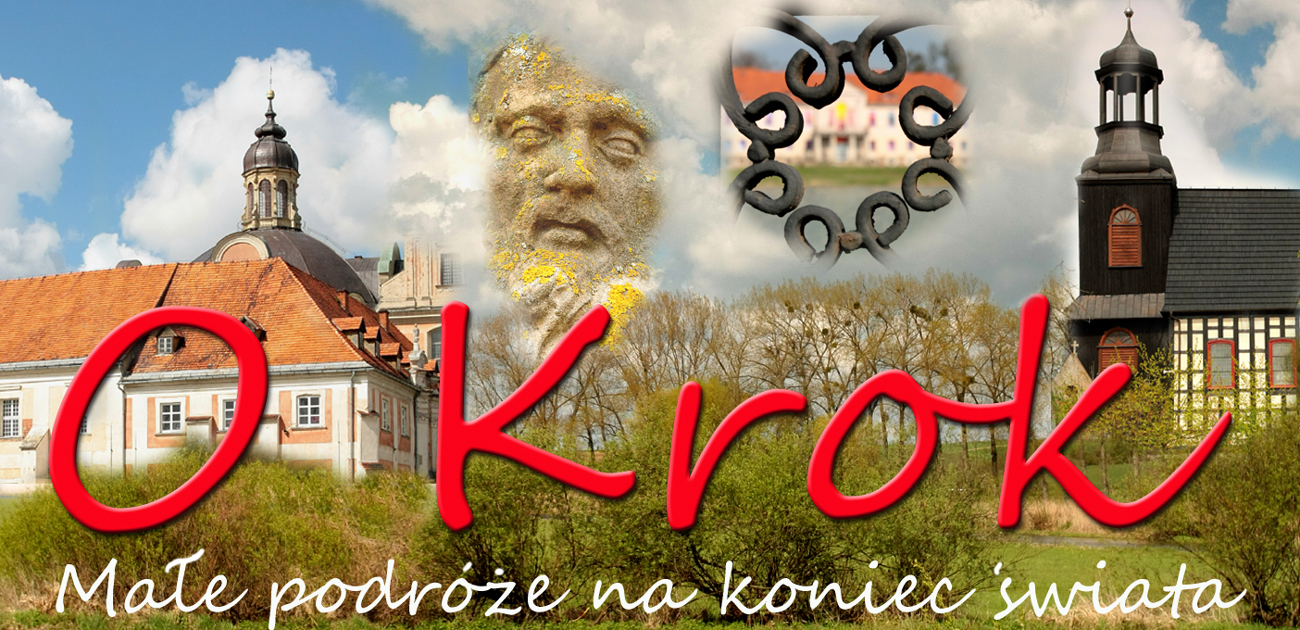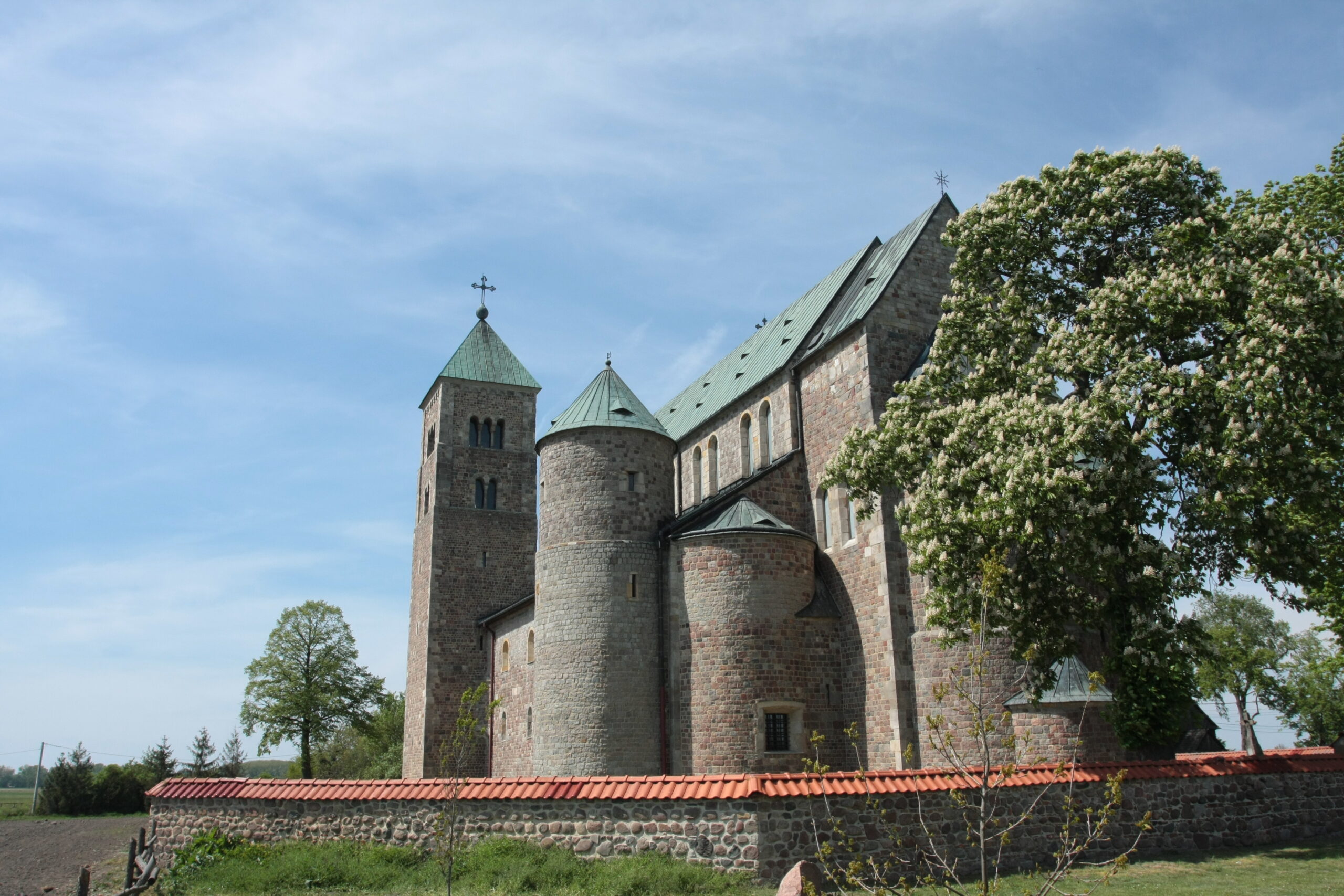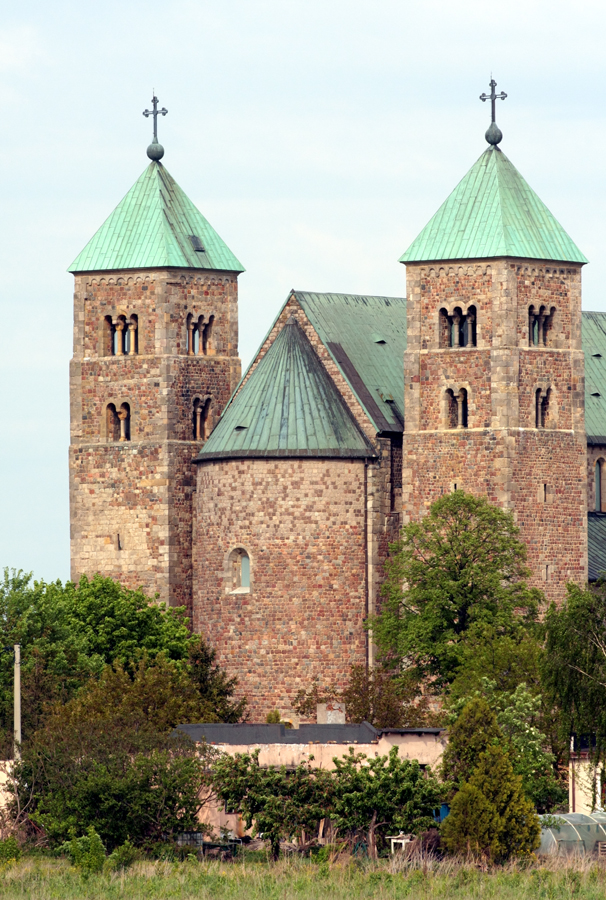Czy ktoś może zmusić diabła do wybudowania kościoła? Tak. Piękna dziewczyna, w której zakochał się Boruta. Obiecała, że zostanie jego żoną jak ten wybuduje dla niej dom. Ten wziął się z zapałem do pracy według planów miejscowej piękności. Był tak w niej zadurzony, iż nie pojął w porę, że buduje kościół – owszem dom, dom boży dla miejscowego ludu. Tak była przebiegła piękna Tumianka. Diabeł wściekł się. Zaparł o narożnik wieży południowej i chciał przewrócić budowlę. Nie dał rady. W kamieniu został tylko odcisk jego wielkich paluchów. Ze złości porozrzucał po okolicznych polach resztę kamieni służących do budowy. Do dziś rolnicy znajdują je na swoich terenach. Tak to miejscowa piękność oszukała diabła.
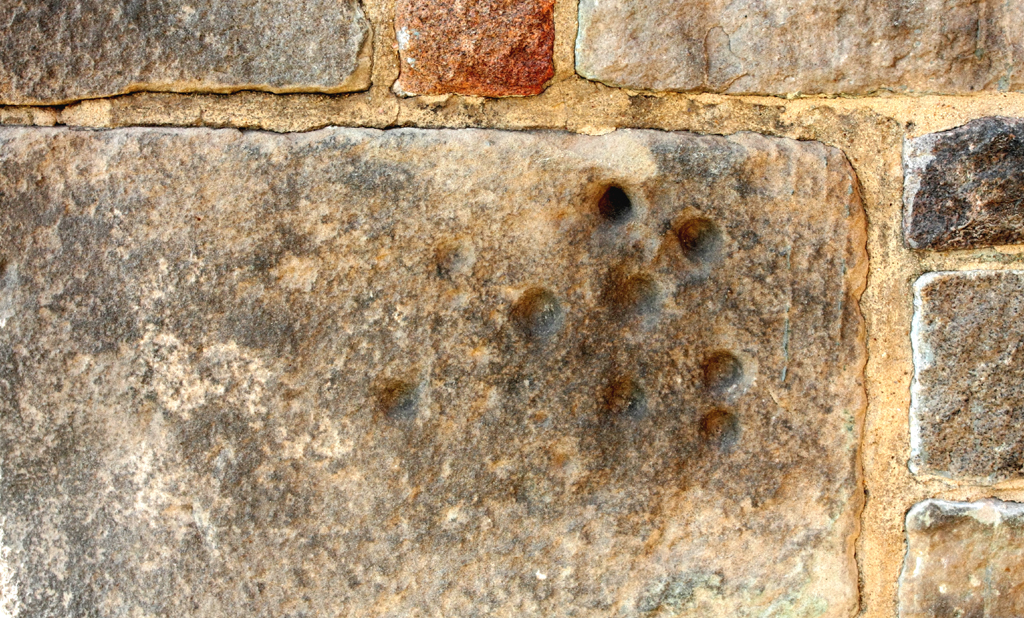
ślady diabelskich paluchów.
A, jak było naprawdę? Już Bolesław Chrobry w 997 roku kazał tu lokować opactwo benedyktyńskie. Nie przetrwało długo. Istnieje szkic przedstawiający relikty opactwa benedyktyńskiego na rzucie kolegiaty w Tumie. Sama kolegiata pod wezwaniem NMP Królowej i św. Aleksego powstała z inicjatywy Salomei z Bergu wdowy po Bolesławie Krzywoustym. Budowa trwała tylko 20 lat! Już w 1161 roku kościół został konsekrowany.
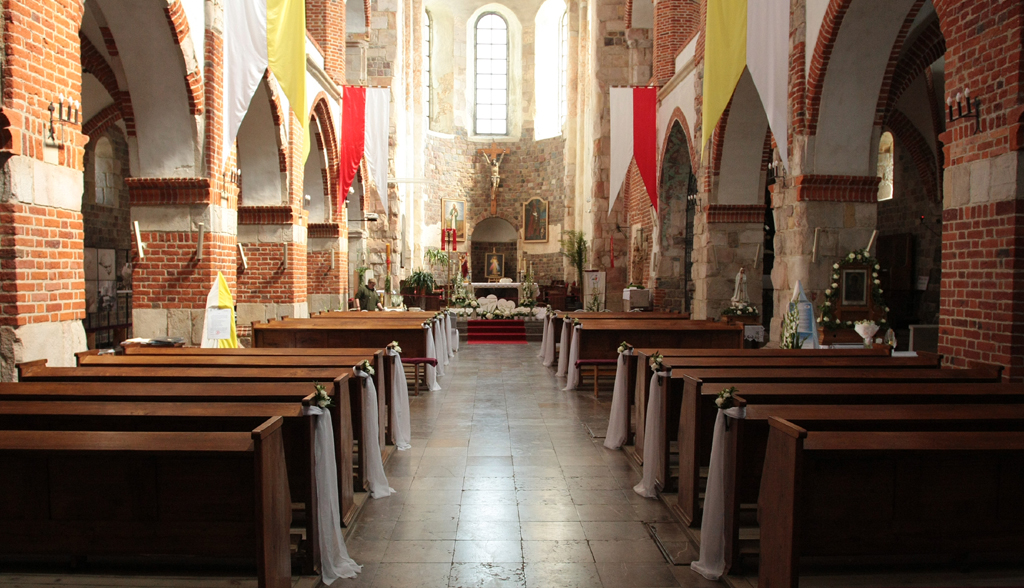
Wchodzę przez portal północny, stawiam stopę na progu wyszlifowanym setkami lat dziejów i zawieruch wojennych. Nad głową Maryja z Jezusem, być może to jedna z pierwszych, lub pierwsza na świecie pieta.
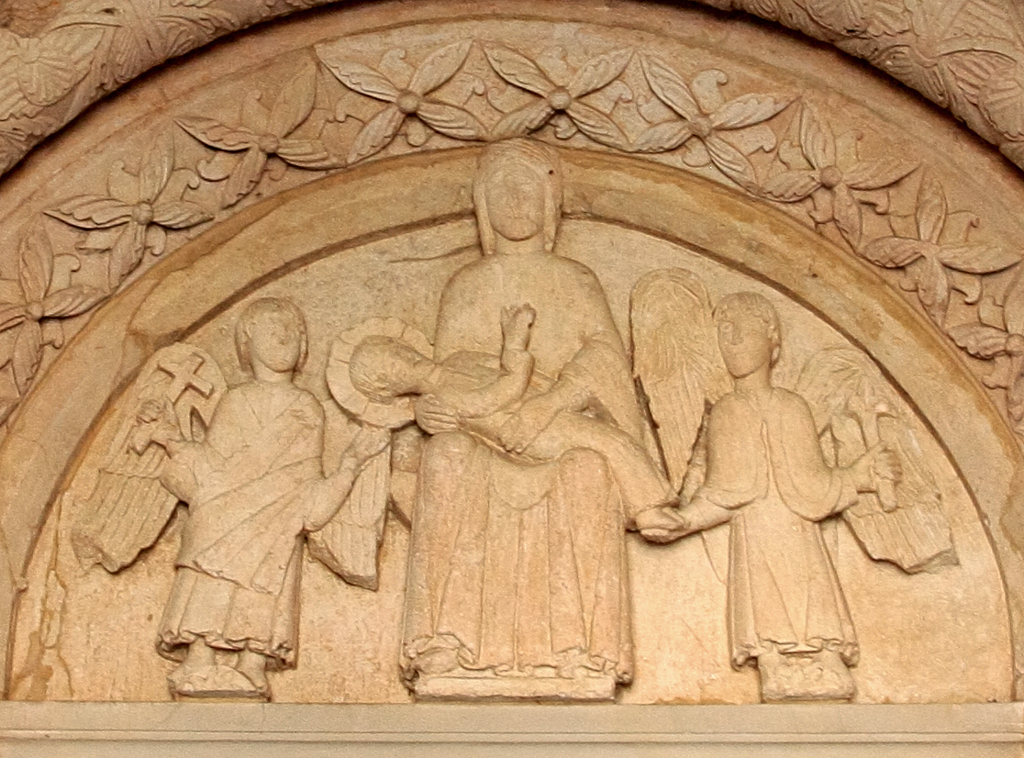
Wzory, symbolika…Czy wszystko jest dla nas zrozumiałe? Wczesne chrześcijaństwo było inne. Chłód wnętrza, piętno czasu, ogrom dziejów.
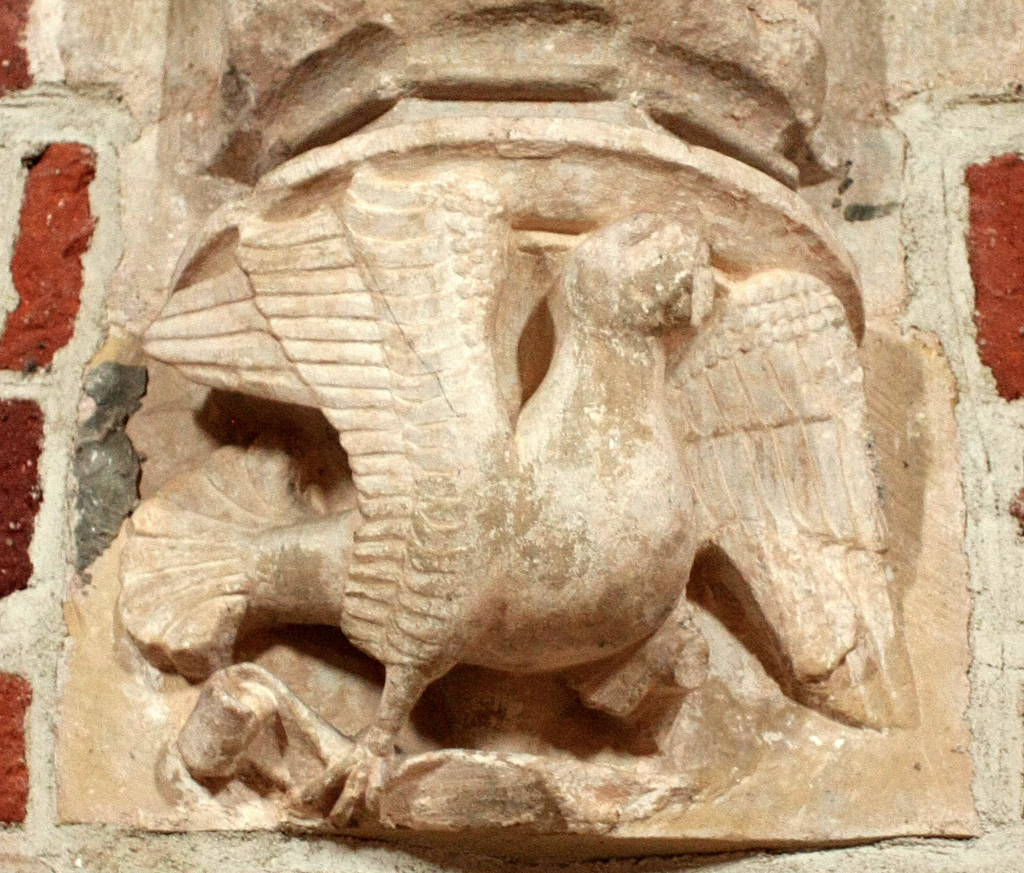
To wspaniała budowla. Ciekawa inna niż kościoły, które widziałem w Polsce. Są tu na przykład dwa ołtarze. Z przodu jak zwykle, ale i z tylu nawy głównej. A, tam mocno już spłowiale, ale oryginale i najstarsze w Polsce malowidło romańskie.
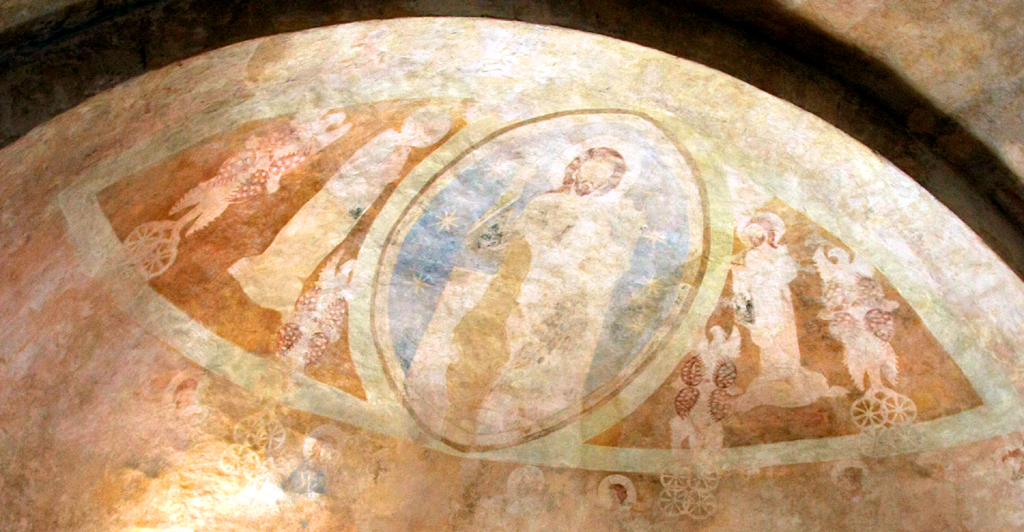
Są jeszcze inne zabytki: płyta nagrobna, oryginalne deski stropowe, portal okalający wejście do zakrystii, gdzie można zobaczyć egzotyczne ornamenty roślinne. Sama bazylika robi wrażenie. Można sobie wyobrazić dostojników zajmujących ławy, biskupów, możnych, władców, rycerstwo. To tu od 1180 roku odbywały się zjazdy. Coś w rodzaju pierwowzoru sejmików. Tu było centrum władzy i polskości.
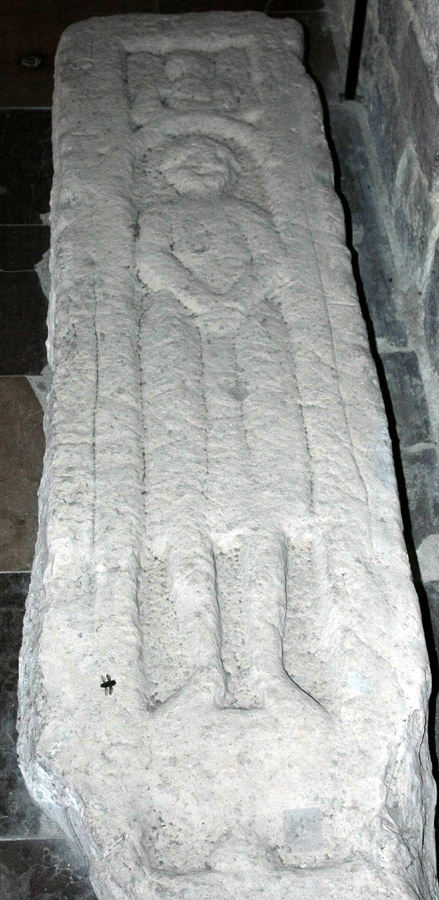
To kościół warowny niejednokrotnie odpierał ataki, we wnętrzu jest nawet studnia żeby nie dać się wrogom. Wieża południowa wysoka na 75 łokci jest oryginalna z XII wieku, północna została uszkadzana podczas bitwy nad Bzurą.
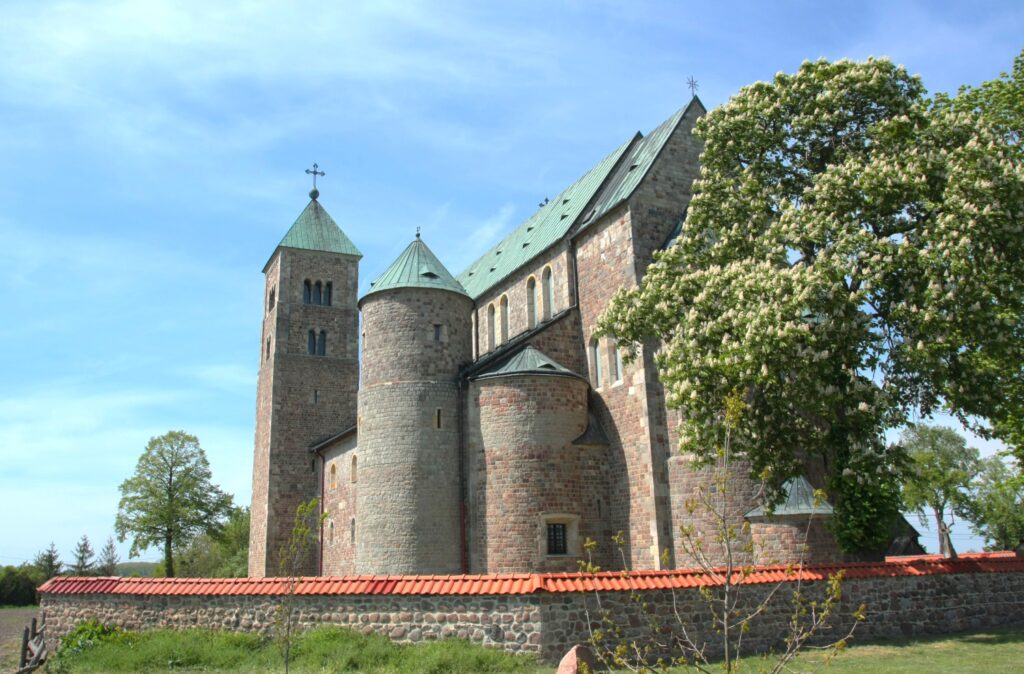
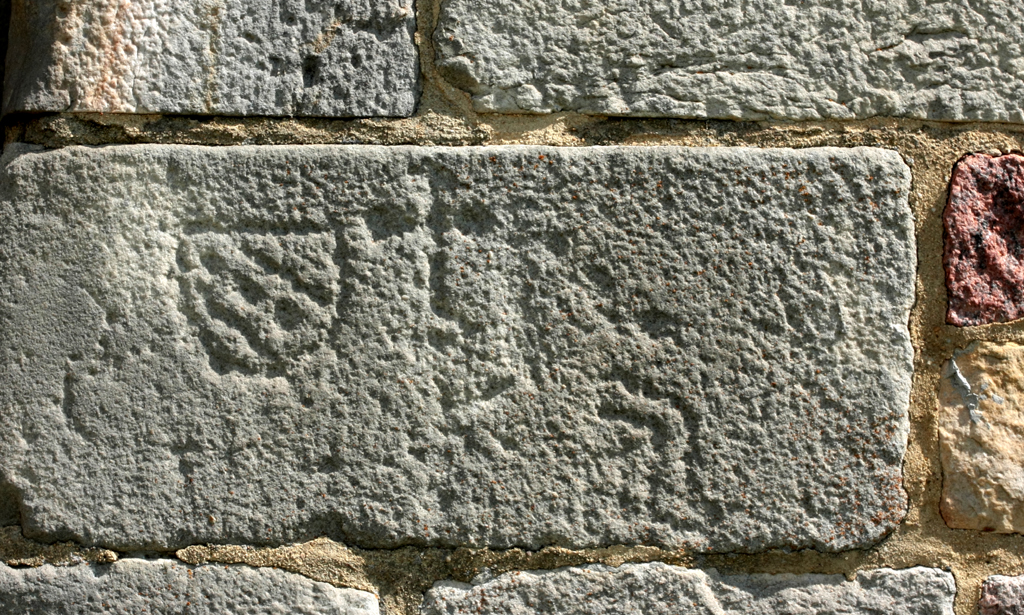
Dzieje nie oszczędzały kolegiaty w Tumie. Płonęła, była plądrowana, a nie brakowało a jej ruiny zostały by po II wojnie światowej rozebrane, ale jest, góruje nad okolicą swoją romańską bryłą. Warto tam dotrzeć i przesiąknąć jej wspaniałą historią.
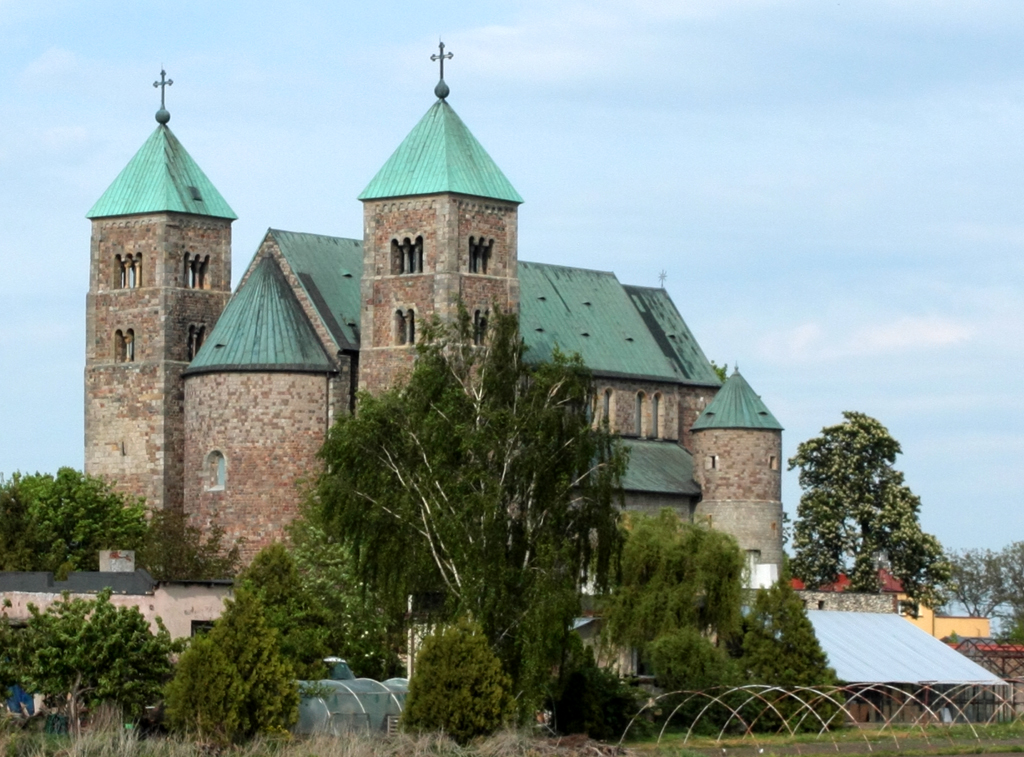
Can anyone force the devil to build a church? Yes. A beautiful girl with whom Boruta fell in love. She promised to marry him if the devil built her a house. He eagerly set to work according to the local beauty’s plans. He was so infatuated with her that he didn’t realize in time that he was building a church—indeed, a house, a house of God for the local people. Such was the cunning beauty of Tumianka. The devil was furious. He braced himself against the corner of the southern tower and tried to topple the building. He failed. Only the imprint of his big toes remained in the stone. In his anger, he scattered the remaining stones used for the construction across the surrounding fields. Farmers still find them on their lands to this day.
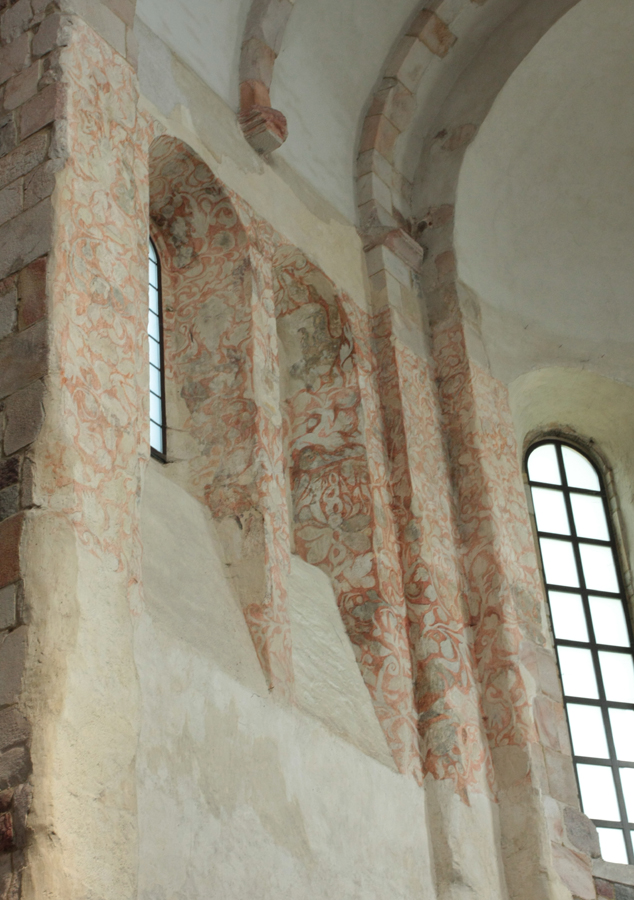
And what was the reality? Bolesław the Brave ordered the foundation of a Benedictine abbey here in 997. It didn’t last long. There is a sketch depicting the relics of the Benedictine abbey on the floor plan of the collegiate church in Tum. The collegiate church itself, dedicated to the Blessed Virgin Mary Queen and St. Alexius, was founded at the initiative of Salomea of Berg, the widow of Bolesław III Wrymouth. Construction took only 20 years! The church was consecrated in 1161.
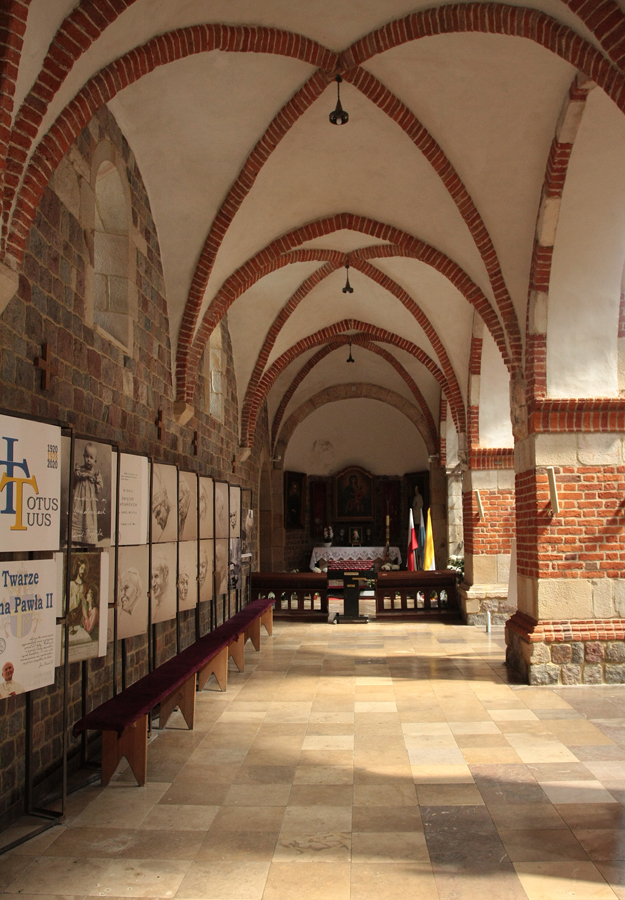
I enter through the north portal, setting foot on a threshold polished by hundreds of years of history and warfare. Above my head is Mary with Jesus, perhaps one of the first, or perhaps the first Pietà in the world.
The patterns, the symbolism… Does it all make sense to us? Early Christianity was different. The coldness of the interior, the mark of time, the vastness of history.
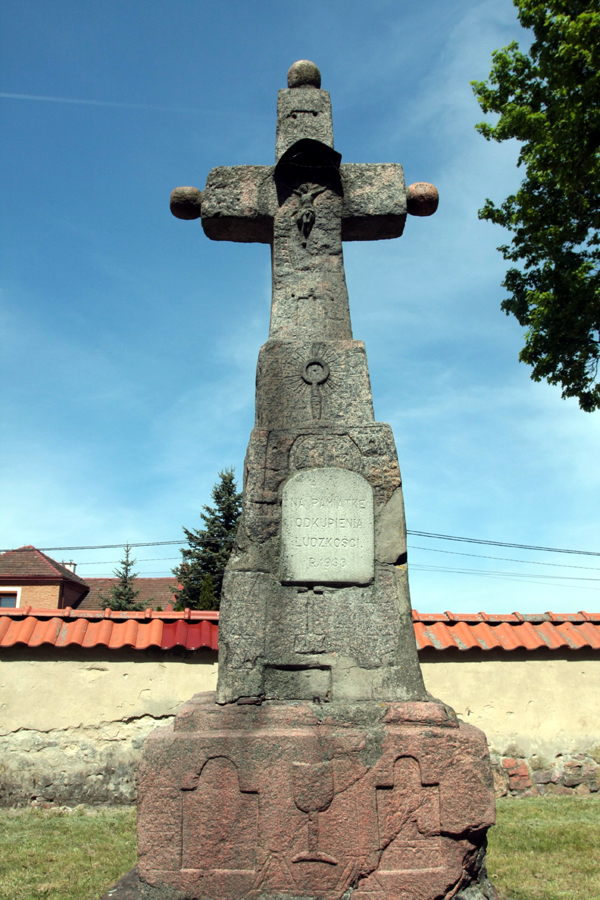
It’s a magnificent building. Interestingly, different from the churches I’ve seen in Poland. For example, there are two altars here. At the front, as usual, but also at the back of the main nave. And, there, a heavily faded, but original, Romanesque painting, the oldest in Poland. There are other monuments: a tombstone, original ceiling boards, and a portal framing the entrance to the sacristy, where exotic floral ornaments can be seen. The basilica itself is impressive. One can imagine dignitaries occupying the pews, bishops, nobles, rulers, and knights. It was here that meetings were held from 1180 onwards. A kind of prototype for regional assemblies. This was the center of power and Polishness.
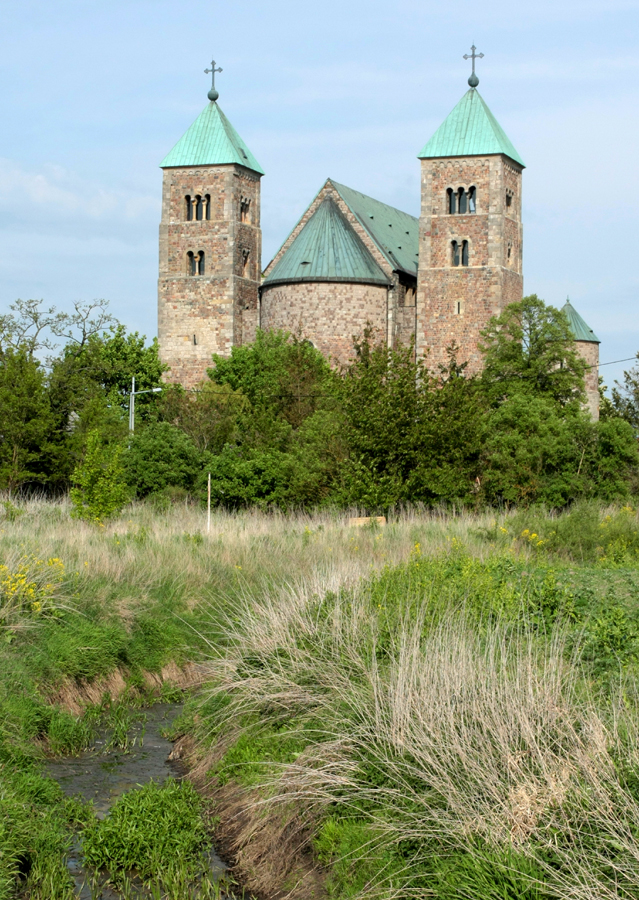
This fortified church has often repelled attacks; it even has a well inside to ward off enemies. The 75-cubit-high southern tower is original from the 12th century, while the northern one was damaged during the Battle of the Bzura.
History has not spared the collegiate church in Tum. It burned, was plundered, and many others, and its ruins would have been demolished after World War II, but it remains, towering over the surrounding area with its Romanesque structure. It is worth visiting and soaking in its magnificent history.
